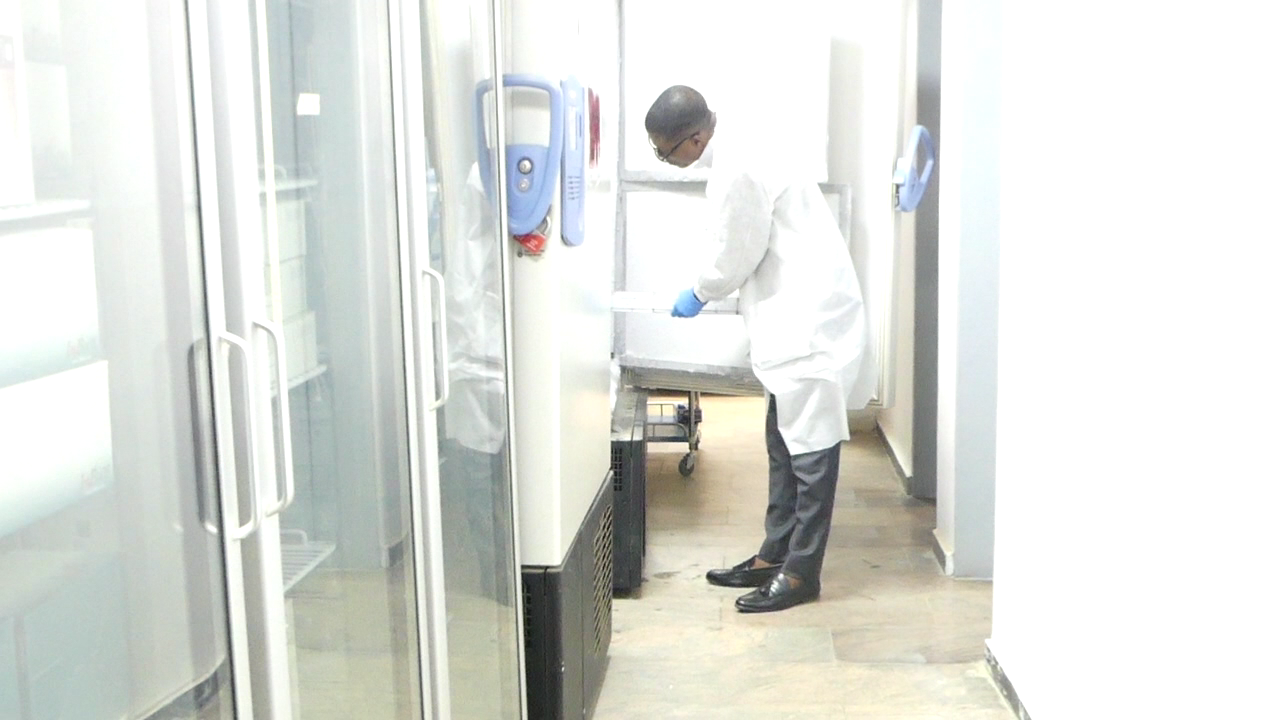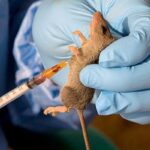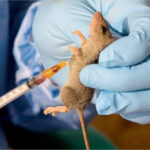It was the epidemic that didn’t happen. In November 2019, Nigeria was yet to be bogged down in the coronavirus pandemic.
A passenger’s vitals caused a scare at the international airport. Ebola was suspected. The passenger was whisked off to University of Abuja Teaching Hospital.
Scientists from the Nigeria Centre for Disease Control scrambled a team off to the hospital. It was past midnight. The team took samples and drove over 56km to the NCDC national reference laboratory in Gaduwa.
They began processing the sample at 2.30am. By 4am, they had a result ready for the hospital: the passenger was negative for Ebola.
It is a record turnaround time that’s become crucial to testing for diseases—and it has taken some buildup to that November night in 2019.
Five years before, in the recondite town of Ede in Osun, a little-known laboratory helped diagnose Ebola virus disease, as the epidemic began knocking the socks off Africa. It also developed the Ebola Rapid Diagnostics test (REBOVTM)—the first 15-minute diagnostics breakthrough that help contain the epidemic in West Africa.
The lab, African Centres of Excellence for Genomics of Infectious Diseases (ACEGID) domiciled at Redeemer’s University, Ede has pushed the entry of genomics into infectious diseases that constitute public-health emergences.
Working on molecular biology, it has become a reference laboratory for infectious diseases to both the World Health Organisation and the Africa CDC.

That capacity has become important once the world began reeling from coronavirus pandemic—and the NCDC shoed in to support states in establishing molecular biology laboratories.
There’s been no shortage of epidemics. NCDC is monitoring nine outbreaks: Lassa fever, meningitis, cholera, monkeypox, yellow fever, measles, avian influenza flu, Rubella, and, lately, COVID-19.
The numbers coming from viral haemorrhagic fevers, and their numbers continue to grow. But it is up to the laboratories across the country provide guidance in leading detection, prevention and preparedness for the next pathogen.
The work of public health labs is only one aspect of epidemic preparedness. COVID-19 so far has been a swift kick in the leg for Nigeria to strengthen the diagnostic capacity of health systems.
“Prior to 2016, Nigeria did not have a functional public health reference laboratory despite the high burden of infectious diseases. Consequently, this affected our response to disease outbreaks,” says NCDC director-general Chikwe Ihekweazu.
“In the last five years, we have established and strengthened the capabilities of the NCDC National Reference Laboratory for public health diagnosis. Additionally, the NRL has continued to coordinate the establishment and operationalisation of a network of public health laboratories.”
In a single year, the number of laboratories responding to epidemics have grown from 37 to 143 nationwide.

High priority diseases
On the morning of January 14, 2020, three samples arrived the lab—one from Bauchi for yellow fever and Lassa fever, a second from Kano for influenza, and a third from a district hospital in Abuja for influenza. That was weeks before Nigeria battened down its hatches and slipped into the COVID-19 pandemic lockdown.
The scientists within the lab work in several stages, behind the protection of goggles and protective gear, their gloved arms stuck through biosafety cabinets to avoid contaminating themselves and the pathogen.
A bank of biosafety cabinets is on hand so researchers can work on many samples to ensure they beat the turnaround time of 48 hours to send results back to the hospitals.
In different stages, they inactivate, extract, purify the pathogens, mix in reagents, then amplify the pathogen signal and look for sigmoid curves—against a control—that tell which pathogen they are dealing with or not.
Different gizmos spit out the final results—cerebrospinal meningitis, monkeypox, influenza, Lassa fever, yellow fever, dengue.
What they are doing is sequencing the genome of pathogens and creating a database against which researchers can make something they call “inferential diagnosis”. It is in stages ruling out known pathogens and focusing on what is not known—the equivalent of a microbial “if not x, then what?” The same scenario played out in the diagnosis of coronavirus in Wuhan.
Genomic scientists use inferential diagnosis for current diseases; they also use it to determine the disease a dead person may have had even after their death. Some instances may be diseases nobody is even paying attention to.
Their findings, in such cases, help guide surveillance for previously unthought-of diseases. In March of 2020, they began sequencing for monkeypox.
The joint efforts of the lab, ACEGID, the National Veterinary Research Institute in Vom and the Irrua Specialist Teaching Hospital (popular for Lassa fever research) are painting a vivid picture of what to expect with newly emerging pathogens or pathogens jumping from animals to humans.
Many of the existing haemorrhagic fevers fall in the latter group.
By contrast, in July alone, 30 new, previously unknown viruses were unearthed in ice caps. And the coronavirus mutated yet again—from what it was known as starting from China to Alpha, Beta, Gamma, Delta and, now Mu variant.

Substantial and sustained funding beyond the petri dish
The gizmos are rolling in, as the future of public health becomes increasingly digital. Papers go out, and gadgets come in. A raft of emergency operations centres nationwide are linked for real-time data, information sharing and collaboration. A digital information system for logistics tracks supplies to prevent stockout of diagnostic materials at national and state levels.
The ideal is a system that provides both routine and enhanced molecular diagnostic services and contributes to the prevention, detection and response to disease outbreaks in Nigeria.
“Despite the progress made, there are still several needs to be met in strengthening Nigeria’s public health laboratory system and capacities,” says Ihekweazu.
“This will require not only substantial funding but also stable funding that meets evolving needs and novel technologies.”
The funding should be for general health care but a particular emphasis is necessary for epidemics, considering threat from highly lethal pathogens.
When a budget line item for the upgrade of the reference lab at Gaduwa entered the appropriation bill in 2017, it was for only N16 million. The allocation for the upgrade grew to N40.8m in 2019, then dropped to N32m in 2020. Only this year, with the focus on COVID-19 and with its status established as a reference lab for the country and subregion has its upgrade allocation being hiked up to N60.7m.
Lassa fever, meningitis, dengue fever and yellow fever are on the country’s list of public-health priority diseases for nationwide study. A line item for the study entered the national budget for the first time in 2018 for only N10m. The high-priority grouping has expanded to include all nine yearly disease outbreaks hitting the country each year, but the budget for their study has grown over three years to just N36m.
The first time a line item for restocking essential commodities for detection and response for viral haemorrhagic fevers and other priority diseases nationwide entered the budget was in 2018. The allocation started at N60m. It fluctuated over two years and in 2021, only N36m was allocated.
Equipping the microbiology lab—just one section of a reference lab—in Abuja and nine others is a project on the NCDC’s budget. Allocation for the project started out at more than N200m in 2017. This year, the allocation for the project stood at N36m.
Among 81 diagnostics centres around the country, some belong to state governments, military, private sector and United Nations. Only 37 are owned by the federal government.

But even private-sector labs are feeling the pinch for funding.
“Laboratories require huge investments which must be maintained whether In use or not. To sustain such requires funds and uptake,” says Elochukwu Adibo, president of the Guild of Private Medical Laboratory Directors of Nigeria.
COVID-19 has shown the country that it needs even private labs, upon accreditation, to scale up access to diagnostics.
“Government now realizes that there are genuine and reliable professionals in the private space that provide valuable and meaningful service to this country,” Adibo.
“The pandemic highlighted shortages and the private sector rose to the call to expand capacity for the country. The gains are being acclaimed by all.
“Lessons to be learned from this is that the restrictive and discriminatory tendencies to the private sector which was the norm in government circles need to be changed.”
But it doesn’t take away the question of “substantial and sustained funding” that Ihekweazu mentioned at the outset, and reiterated by Adibo.
Diagnostics in this day and age is high tech and requires huge investments in terms of equipment, consumables, competent personnel and quality management system.
Start-up labs face rigours of financial institutions, which starves them of funds for upgrades. And public labs have to contend with lean government resources stretching to meet competing demands. But exceptions make sense in view of detecting, preparing for or preventing the next epidemic.
“In Nigeria, medical diagnostics is treated like a mechanic workshop where they ‘learn work’ the result is what most us hold as an opinion about our laboratories. We have had to battle having untrained persons forced upon laboratory management to partake in handling patient samples,” says Adibo.
“Of course, what you get is garbage in garbage out.”
Epidemics are with humans every day, but future ones could surpass previous outbreaks. The emergency underscores a need for deliberate and sustained investment in the country’s health security–the only way to ensure Nigeria is better prepared.
This story is part of the Epidemic Preparedness and Response series, with support from the “Global Health Advocacy Incubator, A Program of the Campaign for Tobacco Free Kids” and “Vital Strategies.”

 Join Daily Trust WhatsApp Community For Quick Access To News and Happenings Around You.
Join Daily Trust WhatsApp Community For Quick Access To News and Happenings Around You.
